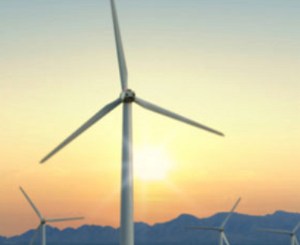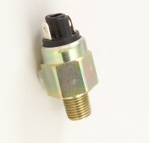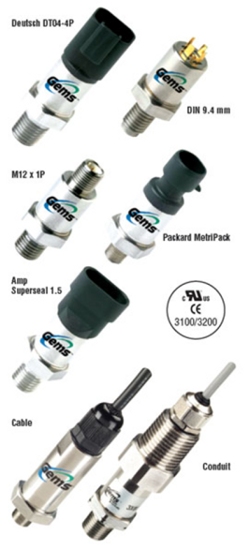 |
| April 23, 2013 | Volume 09 Issue 16 |
Designfax weekly eMagazine
Archives
Partners
Manufacturing Center
Product Spotlight
Modern Applications News
Metalworking Ideas For
Today's Job Shops
Tooling and Production
Strategies for large
metalworking plants
Engineer's Toolbox:
The force behind sensors for wind turbines
The common goal to increase energy efficiency is driving the development of ever-more-reliable pressure sensors for use in wind turbines.
By Kelly Labarre, Gems Sensors & Controls

Pressure sensors have played a major role in increasing the efficiency of wind turbines, boosting the growth of an industry that has the proven ability to offer stable, sustainable energy supplies and cut our carbon emissions.
In 2011, the total global capacity of wind farms moved beyond 200 gigawatts (GW). That means wind turbines now have the capacity to satisfy 2.5 percent of the world's demand for electricity -- impressive figures for a technology that is relatively new as a mass-produced tool for the supply of energy. After all, it was not until the late 20th century that a tipping point was reached in our attitude to the environment, and wind power was no longer seen as an optional alternative but a vital component in the global plan to increase renewable energy. However, despite this change in attitudes, wind power is continually asked to prove itself; though most commentators would agree that a portfolio of solutions is required to satisfy the world's colossal demand for energy, the progress of the wind power industry is under constant scrutiny.
Pressure switches and pressure transducers
So how is the industry responding to the challenges presented by both harsh weather conditions and harsh criticism? There are many contributions being made by designers and engineers toward the optimization of wind turbines and, undoubtedly, the contribution of sensors has been key to their improved operation.

Pressure switches and transducers are increasingly being made available to a wide range of specifications, helping to both protect turbines from damage in high winds and to optimize their harvesting of energy in more appropriate conditions. They can be found throughout the turbine system. There are two sensors controlling the two yaw brakes; if the pressure falls below the set limit, the sensors send a signal to the control system, which in turn closes a valve to maintain the remaining pressure in the system accumulator. Another two sensors control the pump that distributes hydraulic pressure to all of the hydraulic equipment on the turbine. Two more sensors control the yaw accumulator, alerting the control system to turn on the pump and recharge the system accumulator when the pressure falls to a set limit. There are further sensors controlling the parking brake and monitoring the gearbox lubricant.
To look at the function of sensors in a little more detail, let's consider hydraulic systems, which are critical to the smooth running of wind turbines. Hydraulic systems play a vital role both in optimizing and defending the turbine by controlling blade pitch and yaw to maximize the amount of power generated under varying wind conditions while protecting the wind turbine from damage. A loss in hydraulic pressure can reduce the performance of a wind turbine, but the consequences can be much worse if the pressure loss results in damage to expensive turbine components.
In most wind turbines, the hydraulic system is driven by a pump that charges a system accumulator to a certain pressure. The pump can then be turned off to conserve electrical power and reduce wear and tear, because the system accumulator can store the pressure delivered by the pump; it can also absorb pressure pulses from the pump and prevent them from being transmitted to the piping. Once the pressure in the system accumulator bleeds off, the pump is turned on to recharge it. In a typical case, the accumulator will be charged to 225 psi and then be allowed to bleed down to 185psi before it is recharged back up to 225psi. To ensure that the pump is turned on and off at the correct times in order to maintain sufficient pressure, it is important to carefully track the pressure in the system accumulator. This vital tracking service is performed by a pressure sensor and makes a crucial contribution to the efficient function of wind turbines.

Another important role played by pressure transducers is in managing the pitch control system, which is also fed by the main system accumulator, in order to either optimize or defend the turbine. To optimize its power output at any given wind speed, a wind turbine blade needs to be pitched at a specific angle. In most cases, adjusting the pitch of the blade (the angle at which the edge of the blade cuts into the wind) ensures optimal efficiency. When the wind speed rises above the turbine's rate capacity, there is danger of damage. The speed at which the blades can be edged parallel with the wind determines whether such damage can be avoided. Transducers enable the swift response of the hydraulic pitch control, minimizing damage to wind turbines and preventing costly maintenance and repairs.
Pressure sensor improvements
A recent advance in wind turbine technology relates to the supply of overpressure capability. For example, a sudden gust of wind hammering the surface of the blades might generate a pressure spike on the hydraulics that control the pitch and yaw of the blades. This specific problem has been addressed by Gems Sensors and Controls, offering pressure sensors that allow overpressure capacity to be raised beyond the limits of conventional components. These sensors can also be protected by the addition to the pressure port of a snubber, a restrictive orifice that smoothes out pressure spikes to protect the sensor.
Another recent improvement has been the introduction of stainless steel casings. These casings provide a high level of shielding from electromagnetic interference, reducing the possibility that the vast amount of electrical potential produced by the turbine could cause the sensor to provide an incorrect pressure reading. This prevents the possible scenario of a sensor indicating that pressure in an accumulator is at normal levels when, in fact, it has fallen too low to control the pitch of the blades, resulting in serious damage. Similarly, the capability of pressure sensors in wind turbine applications to withstand a wide range of temperatures and continue to deliver reliable results has been enhanced. Not only must these sensors resist external temperatures of different extremes, but also the heat from within. Pressure sensors typically operate in a confined space alongside electric motors, hydraulic pumps, and accumulators, all pumping out heat of their own, which is why the latest sensors use patented temperature compensation techniques to ensure accurate measurements.
These are just a few examples of how the need for energy efficiency has driven the development of better sensors and how these enhanced components are providing the long-term reliability that is crucial for wind turbine operators. As the wind power industry continues to grow, pressure sensors will remain an integral part of it, offering a crucial line of defense and a vital tool for optimization.
For more information about how Gems Sensors & Controls finds solutions for pressure applications, call 1.800.378.1600, email info@gemssensors.com, or visit www.GemsSensors.com.
Published April 2013
Rate this article
View our terms of use and privacy policy
